The Well-Tempered Ear
Classical music: Barbara DeMain — wife of Madison Symphony Orchestra music director and Madison Opera artistic director John DeMain — has died
9 Comments
PLEASE HELP THE EAR. IF YOU LIKE A CERTAIN BLOG POST, SPREAD THE WORD. FORWARD A LINK TO IT OR, SHARE IT or TAG IT (not just “Like” it) ON FACEBOOK.
By Jacob Stockinger
Barbara DeMain (below) — the wife of John DeMain, the music director of the Madison Symphony Orchestra and the artistic director of the Madison Opera — died Thursday.
A member of the orchestra sent the following note:
“Earlier today, we received some very tragic news from the orchestra office.
“Barbara DeMain passed away earlier this morning after becoming ill late last evening.
“She was admitted to a hospital last evening while John was in rehearsal with the opera.
“Their daughter Jenny (below top on right, with her father) drove to Madison from Chicago and she and John (below bottom left, with Barbara) were with her all night until she passed.
“This is very tragic news, and we’re all wanting to reach out in any way we can to support the DeMain family. Once plans are made for a memorial or funeral, we’ll send the information out as quickly as possible.”
“Thank you all for keeping them in your thoughts and prayers.”
The Ear has heard that John DeMain plans on conducting the opera this weekend and the three MSO performances next weekend.
But he has not been able to verify that or other details about Barbara, who was born in Germany as Barbara Dittman, and met John in Houston, where he was the director of the Houston Grand Opera, in 1991. They married soon after meeting, and have been in Madison for 26 years. Barbara was a political activist and an arts consultant.
The Ear will pass along more details as he learns them.
Below — dedicated to Barbara DeMain — is a YouTube video of the “Pie Jesu” movement from the Requiem by Gabriel Faure.
Rest in peace, Barbara.
Tags: #ArtisticDirector, #BarbaraDeMain, #BlogPost, #BlogPosting, #ChoralMusic, #ClassicalMusician, #FacebookPost, #FacebookPosting, #Forward-Looking, #HoustonGrandOpera, #husband-and-wife, #JacobStockinger, #JenniferDeMain, #JohnDeMain, #MadisonOpera, #MadisonSymphonyOrchestra, #MusicDirector, #OvertureCenter, #PassAway, #PieJesu, #ThankYou, #TheEar, #ThoughtsandPrayers, #Thursdaymorning, #VocalMusic, #Wife-and-Husband, #YouTubevideo, admitted, Artistic director, Arts, Barbara DeMain, become, blog, Chicago, choral music, Classical music, classicalmusic, composer, Concert, conduct, conductor, dead, death, dedicate, die, died, evening, Facebook, Family, father, forward, funeral, Germany, Hospital, Houston, Houston Grand Opera, husband, ill, Jacob Stockinger, Jennifer DeMain, John DeMain, like, link, Madison, Madison Opera, Madison Symphony Orchestra, marry, meeting, memorial, morning, Mother, Music, Music director, news, night, office, opera, Orchestra, Overture Center, pass away, passed, peaceful, Pie Jesu, post, posting, prayer, prayers, rehearsal, Requiem, rest, share, support, symphony, tag, Texas, thank you, The Ear, thought, thoughts, Thursday, Tragic, United States, vocal music, wife, Wisconsin, years, YouTube
Classical music: What music best expresses the “bomb-cyclone” and Arctic blasts?
5 Comments
By Jacob Stockinger
Weather-wise, the past couple of weeks have been unforgettable and, in many ways, unbearable.
First, around Christmas, we had one bitterly cold Arctic blast.
Then after New Year’s Day came the massive “bomb-cyclone” that brought snow and ice, high winds and flooding, to the East Coast all the way from Florida to Maine.
Next came another Arctic blast – that put most of the country into the deep freeze with sub-zero temperatures that broke records over a century old.
(How, The Ear wonders, does the Arctic blast differ from the Polar Vortex of a few years ago? And who invents such colorful names that certainly seem new.)
Such extreme wintry weather has brought misery, hardship and even death to wherever it struck.
With luck, the coming week will see a return to more normal temperatures and more normal winter weather.
Still, the past few weeks got The Ear to wondering: What music best expresses such extreme kind of winter weather?
The highly virtuosic and aptly named “Winter Wind” Etude in A minor, Op. 25, No. 11, by Frederic Chopin came to mind. Its swirling notes suggest the howling wind and bitter cold while the minor-key melody has a certain dirge-like or funereal quality to it.
You can hear it played by Evgeny Kissin in the YouTube video at the bottom.
But The Ear is sure that many readers could suggest other musical depictions of extreme winter weather.
So please leave the name of the composer, the title of the work and, if possible, a link to a YouTube video performance at the bottom.
The Ear wants to hear.
Tags: Arctic, Arts, Atmospheric pressure, Bach, Baroque, bitter, blast, bomb, bomb-cyclone, century, Chamber music, Chopin, choral music, Christmas, Classical music, cold, Cold front, Compact Disc, composer, concerto, cyclone, death, dirge, Early music, East Coast, East Coast of the United States, etude, Evgeny Kissin, Explosive cyclogenesis, flood, flooding, Florida, Franz Schubert, funeral, funereal, hardship, Hartsfield–Jackson Atlanta International Airport, hear, ice, Jacob Stockinger, Johann Sebastian Bach, key, Kissin, LaGuardia Airport, Logan International Airport, Maine, massive, melody, Meteorology, minor, misery, Music, name, National Weather Service, New England, New Jersey, New Year, New Year's Day, New Year's Eve, New York City, note, notes, opera, Orchestra, performance, Piano, Polar Vortex, record, snow, Sonata, sub-zero, swiel, symphony, temperature, title, United States, University of Wisconsin-Madison School of Music, University of Wisconsin–Madison, Viola, Violin, virtuosic, vocal music, weather, Wind, Winter storm, Winter Wind, Wisconsin, Wolfgang Amadeus Mozart, work, YouTube, zero
Classical music: Madison Symphony Orchestra closes its season with the German Requiem by Brahms and the American premiere of Charles Villiers Stanford’s 1921 Concert Piece for Organ and Orchestra
4 Comments
By Jacob Stockinger
The Madison Symphony Orchestra (below, in a photo by Greg Anderson), led by music director John DeMain, will close out its current season this coming weekend.
For the season-closing concert, soprano Devon Guthrie and bass-baritone Timothy Jones will make their MSO debuts when they join the orchestra for Brahms’ A German Requiem.
The concert will open with the American premiere of Charles Villier Stanford’s Concert Piece for Organ and Orchestra featuring Nathan Laube (below top), who is returning to the MSO.
The finishing touch to the 2016-17 season happens in the second half of the concert, when more than 100 members of the Madison Symphony Chorus (below) take the stage with the orchestra and organ to perform Johannes Brahms’ A German Requiem.
Featured vocal soloists in the Brahms German Requiem are soprano Devon Guthrie (below top) and bass-baritone Timothy Jones (below bottom), who is familiar from multiple appearances with the Madison-based Bach Dancing and Dynamite Society.
The concerts in Overture Hall of the Overture Center, 201 State St., are on this Friday, May 5, at 7:30 p.m.; this Saturday, May 6, at 8 p.m.; and this Sunday, May 7, at 2:30 p.m.
Tickets are $16-$87. For more information, go to: http://www.madisonsymphony.org/brahms
Charles Villiers Stanford’s Concert Piece for Organ and Orchestra was completed on April 15, 1921. Stanford (below) is one of the leading figures in what is sometimes called the “Second English Musical Renaissance” — which was a movement in the late 19th century, led by British composers.
Stanford (below) believed in more conservative English contemporary music, rather than the music of Wagner, for example. He composed in all genres but had a great commitment to the organ.
His Concert Piece for Organ and Orchestra was never performed or published during his lifetime. This is the piece’s debut performance with the Madison Symphony Orchestra, and the American premiere of the work.
Johannes Brahms’ A German Requiem was completed between 1857 and 1868. The word “Requiem” is Latin for “rest” or “repose” and in the Catholic faith the Requiem is the funeral Mass or Mass of the Dead. (You can hear the opening movement in the YouTube video at the bottom.)
While usually filled with “terrifying visions of the Last Judgment and pleas for intercession on behalf of the souls of the dead and the living,” Brahms however puts death in a different light. He took sections of the Bible that are religious, but not necessarily Christian, and tells a story of salvation for all.
Although upon its completion, Brahms (below) called this piece, “Ein deutsches Requiem, nach Worten der Heiligen Schrift” (which translates to; “A German Requiem, from Words of the Holy Scripture”), he was quoted saying that his piece should really be called “A ‘Human’ Requiem.” It is believed to be dedicated to Brahms’ mother, and his musical father and mentor, Robert Schumann.
One hour before each performance, Beverly Taylor (below), MSO assistant conductor and chorus director, as well as director of choral activities at the UW-Madison, will lead a 30-minute Prelude Discussion in Overture Hall to enhance concertgoers’ understanding and listening experience.
For more background on the music, visit the Program Notes by MSO trombonist and UW-Whitewater professor Michael Allsen (below) at: http://www.allsenmusic.com/NOTES/1617/8.May17.html
Groups of 15 or more can save 25% by calling the MSO office at (608) 257-3734. For more information visit, madisonsymphony.org/groups
Student rush tickets can be purchased in person on the day of the concert at the Overture Center Box Office at 201 State Street. Students must show a valid student ID and can receive up to two $12 or $15 tickets. More information is at: madisonsymphony.org/studentrush. Students can receive 20% savings on seats in select areas of the hall on advance ticket purchases.
Seniors age 62 and up receive 20% savings on advance and day-of-concert ticket purchases in select areas of the hall.
Discounted seats are subject to availability, and discounts may not be combined.
Find more information at madisonsymphony.org
Major funding for the May concerts is provided by: Kenneth A. Lattman Foundation, Inc., Larry and Jan Phelps, University Research Park, and BMO Wealth Management. Additional funding is provided by: WPS Health Solutions, Carla and Fernando Alvarado, and Wisconsin Arts Board with funds from the State of Wisconsin and the National Endowment for the Arts.
Tags: 19th century, A German Requiem (Brahms), American, Arts, Bach Dancing and Dynamite Society, background, baritone, bass, Bible, BMO, BMO Harris Bank, Brahms, British, Catholic, Cello, Charles Villiers Stanford, choral music, chorus, Christian, Classical music, composer, composers, concert piece, concerto, conductor, conservative, dead, Devon Guthrie, discount, discussion, English, faith, funding, funds, funeral, genre, German, human, Jacob Stockinger, John DeMain, Latin, Madison, Madison Symphony Chorus, Madison Symphony Orchestra, mass, Mother, movement, Music, Nathan Laube, National Endowment for the Arts, NEA, Orchestra, organ, Overture Center, Prelude, premiere, professor, program notes, religious, Renaissance, Requiem, Richard Wagner, salvation, Schumann, Season, senior, soloist, soprano, State of Wisconsin, Student, symphony, Timothy Jones, Trombone, United States, University of Wisconsin-Madison School of Music, University of Wisconsin–Madison, University Research Park, UW-Whitewater, video, Viola, Violin, vocal music, Wagner, wealth, weekend, Wisconsin, Wisconsin Arts Board, YouTube
Classical music: The UW Concert Choir, Choral Union and Symphony Orchestra will perform world premieres, local premieres and new music in three concerts this weekend
1 Comment
By Jacob Stockinger
The Ear has received the following messages from UW composer Laura Schwendinger and from Beverly Taylor, the director of choral activities at the University of Wisconsin-Madison School of Music who is also the assistant conductor and chorus director of the Madison Symphony Orchestra:
Writes conductor Beverly Taylor: This is a busy and musically fascinating weekend for me coming up.
On Friday night at 8 p.m. in Mills Hall, there is a special concert by the Concert Choir (below) on the subject of Art Born of Tragedy, with the acclaimed guest cellist Matt Haimovitz.
Tickets are $15, $5 for students. For more information about tickets as well as the performers and the program, go to:
http://www.music.wisc.edu/event/uw-concert-choir-4-matt-haimovitz/
Then in Mills Hall at 8 p.m. on Saturday night and at 7:30 p.m. on Sunday night, there are two performances of When Lilacs Last in the Dooryard Bloomed by the 20th-century composer Paul Hindemith by the UW Choral Union and the UW Symphony Orchestra (below). It is a work that to my knowledge has never been performed in Madison.
Tickets are $15, $8 for students. For more information about obtaining tickets and about the concert, visit:
http://www.music.wisc.edu/event/uw-choral-union-uw-symphony-orchestra/
Here is more information about the events:
CONCERT CHOIR
The Concert Choir performance explores in music of several centuries the theme of “Art Born of Tragedy” — how outside events can be the spark that causes the creation of works of substance that range from the gentle and comforting to rage and despair.
We will sing music from the Renaissance: part of the Thomas Tallis’ “Lamentations of Jeremiah (on the ancient destruction of Jerusalem),” and a John Wilbye madrigal “Draw on Sweet Night for a Broken Heart.”
We will present three works from modern composers: one is a world premiere by the prize-winning composer Laura Schwendinger (below top), my colleague at the UW-Madison, for viola — played by Sally Chisholm (below bottom) of the UW Pro Arte Quartet — and wordless chorus. It is called “For Paris” in memory of those killed in the Paris terrorist bombings of 2015.
(Adds composer Laura Schwendinger: “The viola starts this short work by referencing only for a moment the merest idea of a ‘musette song,’ one that might be heard on an evening in a Paris cafe. The choir enters with a simple refrain that repeats again and again, each time with a little more material, as an unanswered question of sorts. Each time the viola reenters the texture, the music becomes more pressing in a poignant manner, until it arrives in its highest register, only to resolve with the choir as it quietly acquiesces in the knowledge that the answer may not be known.”)
We will present a short “O vos omnes” (O you who pass by) written by Pennsylvania composer Joseph Gregorio (below), composed in memory of a Chinese girl hit by a car and left to die.
The third piece is a reprise of “Après moi, le deluge” by Luna Pearl Woolf (below top), which we premiered and recorded 11 years ago. We are lucky to have back the wonderful internationally known cellist Matt Haimovitz (below bottom), who premiered this work with it. The text, written by poet Eleanor Wilner, mixes the Noah story with the Hurricane Katrina disaster.
The term “Après moi, le deluge” is a term attributed to Louis XV or his mistress Madame Pompadour, and means “after me the flood” — referring either to the chaos after his reign, or that what happens afterword bears no importance for him.
The work has four different moods like a symphony — with strong themes at the start and cries for help, followed by the slow movement despair, a scherzo-like depiction of havoc, and a final movement that is like a New Orleans funeral, upbeat and Dixieland.
Throughout the program we also present spirituals that depict loneliness or salvation from trouble.
UW CHORAL UNION
In certain ways, When Lilacs Last in the Dooryard Bloomed resembles the Concert Choir concert in that it contains a number of moods and styles as well, under a dark title. The subtitle of the work is “a Requiem for Those We Love.”
It was commissioned by the great choral and orchestral conductor Robert Shaw as a tribute to President Franklin Delano Roosevelt on his death and the train ride that carried him from Warm Springs, Georgia, to Washington, D.C.
The text that Paul Hindemith (below top) chose is by Walt Whitman (below bottom), who wrote his poem on the death of Abraham Lincoln, and the funeral train from Washington, D.C., to Springfield, Illinois.
Whitman’s grief is combined with pride and joy in the countryside that the train traverses, and his feelings find an outlet in the thrush that sings out its song. His sense of a sustaining universe is a contrast to his depiction of the despair and ravages of the Civil War.
Hindemith’s calling the work a “Requiem for Those We Love,” puts it, like the Brahms’ “German” Requiem, into a class of non-liturgical requiems — that is, the texts are not those that are part of the Catholic Mass for the Dead, but are other selected texts of joy or remembrance.
Hindemith’s style can loosely be described as tonal that veers away into dissonance and returns again to the home key. The Prelude and opening movement are dark; the solo songs of baritone (James Held, below top) and mezzo-soprano (Jennifer D’Agostino, below bottom) are marvelous; the fugue on the glories of America is glorious and other sections are soft and tender. (NOTE: You can hear the orchestral prelude of the work, with composer Paul Hindemith conducting the New York Philharmonic, in the YouTube video at the bottom.)
The work is hard for both chorus and orchestra, but well worth the effort. The piece is about 80 minutes long and will be performed without interruption. It’s a work I’ve always wanted to do, having heard it performed at Tanglewood many years ago. I’m delighted to have the chance now.
Tags: 20th-century, Art, Arts, auto, baritone, Beverly Taylor, born, cafe, car, Catholic, Chamber music, chaos, China, Chinese, Choir, choral music, Choral Union, chorus, Civil War, Classical music, comfort, composer, Concert Choir, conductor, D.C., dead, despair, dissonance, Dixieland, Early music, Eleanor Wilner, FDR, Franklin Delano Roosevelt, fugue, funeral, gentle, Georgia, grief, heart, Hurricane, Hurricane Katrina, ILLINOIS, Jacob Stockinger, James Held, Jennifer D'Agostino, Jeremiah, Jerusalem, John Wilbye, Joseph Gregorio, Joy, Kartrina, lamentation, Laura Schwendinger, Lincoln, liturgical, liturgical music, Louis XV, Love, Madame Pompadour, Madison, Madison Symphony Orchestra, madrigal, mass, Matt Haimovitz, Mezzo-soprano, musette, Music, New Music, New Orleans, New York Philharmonic, Orchestra, Paris, Paul Hindemith, Pennsylvania, poet, Prelude, premiere, President, Pro Arte Quartet, rage, ravages, reign, remembrance, Renaissance, Requiem, Requiem Mass, Robert Shaw, Scherzo, song, Springfield, symphony, symphony orchestra, Tanglewood, Tanglewood Festival, terror, terrorist, Thomas Tallis, tonal, tragedy, train, United States, universe, University of Wisconsin-Madison School of Music, University of Wisconsin–Madison, UW, Viola, Violin, vocal music, Walt Whitman, Warm Springs, Washington, When Lilacs Last in the Dooryard Bloomed, Wisconsin, world premiere, YouTube
Classical music: A new recording of Rachmaninoff’s “All-Night Vigil” captures the Russian qualities the composer prized in this sacred music
Leave a Comment
By Jacob Stockinger
Here is a special posting, a record review written by frequent guest critic and writer for this blog, John W. Barker. Barker (below) is an emeritus professor of Medieval history at the University of Wisconsin-Madison. He also is a well-known classical music critic who writes for Isthmus and the American Record Guide, and who hosts an early music show once a month on Sunday morning on WORT FM 89.9 FM. For years, he served on the Board of Advisors for the Madison Early Music Festival and frequently gives pre-concert lectures in Madison.
By John W. Barker
For reasons, astronomical and cultural, the Western and Eastern Orthodox celebrations of Easter are frequently held at separate dates. But this year they coincide (on this coming Sunday, April 16). That gives good reason to direct attention beyond familiar Western Easter music and instead to that of Eastern Orthodoxy.
A new recording of one of the landmarks of Russian Orthodox music provides further stimulus to this.
Russian Orthodox practice did not encourage extensive new compositions, but stressed elaborate liturgical rituals built around the heritage of medieval monophonic chant, while benefiting from the fabulous style of Russian choral singing—those low basses (“octavists”) in particular.
Most composers who worked to enrich the liturgical literature were professional church musicians, but a number of “secular” Russian composers also made contributions. Notable among them were Nikolai Rimsky-Korsakov, Peter Tchaikovsky and Sergei Rachmaninoff (below).
It is the last of those three who has given us the music at hand, a truly memorable sacred creation. The work is his Op. 37, entitled “The Most Important Hymns of the ‘All-Night Vigil,” and commonly called “The All-Night Vigil” (Vsenoshchnogo Bdeniya) or else, more simplistically the “Vespers.”
It was composed during the early years of World War I, which was to bring about the collapse of the Russia that Rachmaninoff knew. It was performed in 1915, and two years later, amid the upheavals of the two Revolutions, the composer left his native land for good.
Rachmaninoff prized his Op. 37 above his other works; it was his proclamation of Russian identity, and after it he wrote no more sacred music. He even hoped that one section of it could be sung at his funeral. (A moving sample can be heard in the YouTube video at the bottom.)
The Orthodox Christian celebration of the Resurrection places emphasis on the Saturday night offices of Vespers and Matins, in a prolonged and elaborate ritual. (This Vigil array can also be used for other significant feasts beyond Easter.)
Given the lengths, Rachmaninoff chose to set his selection of “the most important hymns” for his Op. 37, for a total of 15 sections. He did follow working practice by building his settings on or around traditional chant melodies. He expected that individual sections might have liturgical usage; but he understood that the totality was a grand concert work.
The Rachmaninoff All-Night Vigil, or “Vespers,” has been recorded many times, often by Russian choirs, which have the musical and liturgical style in their blood. But non-Russian groups and directors have also come to recognize the transcendent beauty of this masterwork.
Noteworthy among those was Robert Shaw, the great American choral master whose recording (on the Telarc label) has been acclaimed by his admirers for its predictably superb choral sound. But Shaw and his singers lack Russian sound or spiritual sensitivity.
Other American performers have joined in: the broadly paced recording with Charles Bruffy and his Phoenix and Kansas City choirs (for Chandos) is notable. Paul Hillier’s recording (for Harmonia Mundi) with the Estonian Philharmonic Chamber Choir has earned great respect.
I have just been taken by the brand new release (below) from Paraclete Recordings of Massachusetts, with the Gloria Dei Cantores and members of three other choirs under the direction of Peter Jermihov.
They number 77 singers in all and, as recorded in a church setting, they make a sumptuous sound. Their emphasis is less on clarifying individual voice parts and more on relishing the rich blends that make up the total texture.
While treating the work as a grand concert piece, this performance goes beyond most others by including intonations by clerical celebrants, recalling the liturgical context that was always in the composer’s mind.
One of the striking features of this release is its thick album booklet. This is not only richly illustrated but contains an unusually penetrating background essay. Further, in presenting the Russian texts (in Cyrillic and transliteration) with English translations, it also gives useful comments section by section, for the fullest understanding of the liturgical contexts.
This is a noteworthy addition to the crowded recording picture for this sumptuous and deeply moving sacred music.
Tags: All-Night Vigil, American, American Record Guide, Arts, astronomy, bass, booklet, Chandos, chant, Charles Bruffy, choral music, Christian, Christianity, church, Classical music, Compact Disc, Concert, culture, Cyrillic, Early music, Easter, Eastern, Eastern Orthodox Church, English, essay, Estonia, funeral, Gloria Dei Cantores, Harmonia Mundi, History, Isthmus, Jacob Stockinger, John W. Barker, Kansas City, lecture, liturgy, Madison, Massachusetts, matins, Medieval, monophonic, Music, Nikolai Rimsky-Korsakov, octavist, Orthodox, Paraclete Recordings, Paul Hillier, Peter Tchaikovsky, Phoenix, professor, Rachmaninoff, recording, Resurrection, revolution, ritual, Robert Shaw, Russia, Russian Orthodox, Russian Revolution, secular, singer, Tchaikovsky, Telarc, United States, University of Wisconsin-Madison School of Music, University of Wisconsin–Madison, vesper, vespers, vocal music, Western, Wisconsin, World War I, WORT-FM 89.9, YouTube
Classical music education: Concerto contest winners perform at the Wisconsin Youth Symphony Orchestras winter concerts this Saturday
Leave a Comment
By Jacob Stockinger
WYSO will hold its second concert series of the year with the Diane Ballweg Winterfest Concerts on this Saturday, March 18.
Nearly 500 young musicians will display their great talents to the community during the concerts, which are dedicated to music teachers. (See below for times and programs. And listen to WYSO members talk about WYSO in the YouTube video at the bottom.)
The concert series will feature all five orchestras including the debut performance of WYSO’s newest string orchestra, Opus One.
Under the direction of Geri Hamilton, Opus One consists of string players ages 8 to 12. This ensemble focuses more on technique than on performance, incorporating instruction on fundamentals of scales, shifting and bowing, in addition to formative ensemble skills experience.
The Youth Orchestra concert will also feature two of the winners from the Youth Orchestra Concerto Competition: Violinist, Mary Deck and Percussionist, Adam Goren.
Mary Deck (below), age 16, is a junior at Madison West High School, and has been a part of WYSO since 2011. She will be performing the first movement of the Violin Concerto No. 4 in D minor, Op. 31, by Henri Vieuxtemps.
Adam Goren (below), age 18, is a senior at Middleton High School and has been a part of WYSO since 2013. He will be performing the third movement of Concertino for Marimba by Paul Creston.
The Diane Ballweg Winterfest Concerts will be held in Mills Concert Hall in the UW-Madison George Mosse Humanities Building, 455 North Park Street.
WYSO concerts are generally about an hour and a half in length, providing a great orchestral concert opportunity for families.
Tickets are available at the door, $10 for adults and $5 for youth 18 and under.
For more information about WYSO, go to: https://www.wysomusic.org
This project is supported by Dane Arts with additional funds from the Endres Manufacturing Company Foundation, the Evjue Foundation, Inc., a charitable arm of The Capital Times, the W. Jerome Frautschi Foundation and the Pleasant T. Rowland Foundation. Generous funding was also provided from the American Girl’s Fund for Children. This project is also funded in part by a grant from the Madison Arts Commission with additional funds from the Wisconsin Arts Board.
SCHEDULE AND PROGRAMS
Opus One and Sinfonietta – 11:30 a.m.
Sinfonietta (below)
Longfield (b.1947), Black Diamond
Smetana (1824-1884), Themes from The Moldau, arr. Frost
Mosier, Kirt N., American Reel
Traditional Irish, The Salley Gardens
Richard Stephan (b. 1929), Variations On A Well-Know Sea Chantey,
Grundman (1934-1996), Kentucky 1800
Leyden (1917-2014), Serenade for String Orchestra: Prelude, Fugue, Nocturne, Cakewalk
Dvorak (1841-1904), Themes From The New World Symphony arr. Gruselle
Opus One
Richard Meyer (b.1957), Night Shift
Follow the Drinking Gourd – African-American Folk Song arr. Carrie Lane Gruselle
Ewazen (b.1951), Four Royal Dances: The Lord
Brian Balmages (b.1975), A Beethoven Lullaby
For the Star of County Down –
Richard Meyer (b.1957) Dragonhunter
Concert Orchestra and Harp Ensemble (below top) – 1:30 p.m.
Concert Orchestra (below bottom)
Gounod (1818-1893), Funeral March of a Marionette ed. Rosenhaus
Holst (1874-1934) Jupiter, the Bringer of Jollity from The Planets arr. Leidig
M.L. Daniels (b. 1931) Contending
Tres Danzas de Mexico setting by Rhoads (b. 1918): El Pitayero (from Jalisco); El Café (Province unknown); El Curripiti (from Veracruz)
Montgomery (1771-1854), Angels, From the Realms of Glory, setting Robert W. Smith
Philharmonia Orchestra (below) – 4 p.m.
Wagner (1813-1883), Procession to the Cathedral, from the Opera “Lohengrin” arr. Kennedy
Grieg (1843-1907), Peer Gynt: Suite No. 1, Op. 46: Morning; Ase’s Death; Anitra’s Dance; In the Hall of the Mountain King
Weber (1786-1826), Tourandot, J.75: Overture and March
Hindemith (1895-1963), Symphonic Metamorphosis of Themes by Carl Maria von Weber: Fourth movement – March
Youth Orchestra (below) – 7 p.m.
Vieuxtemps (1820-1881) Concerto for Violin No 4 D minor, Op.31, first movement. Mary Deck, violin soloist
Creston (1906-1985) Concertino for Marimba, third movement. Adam Goren, marimba soloist
Prokofiev (1891-1953) Symphony No 7, op.131, C-sharp minor: Moderato, Allegretto, Andante espressivo, Vivace
Glinka (1804-1857) “Russlan and Ludmilla” Overture
Tags: African American, angels, Arts, Beethoven, brass, cafe, cakewalk, cathedral, concerto, conductor, dance, Dane Arts, drinking, Dvorak, Eric Ewazen, Evjue Foundation, folk, folk song, fugue, funeral, George Mosse, Glinka, glory, Gounod, Grieg, harp, Henri Vieuxtemps, Hindemith, Holst, humanities, Irish, Jacob Stockinger, Jalisco, Jupiter, Lohengrin, Lord, lullaby, Madison, Madison Arts Commission, Madison West High School, march, marimba, Mexico, Music, Music education, New World Symphony, nocturne, opera, Orchestra, Overture, Paul Creston, Peer Gynt, percussion, Prelude, royal, sea chantey, Serenade, Sergei Prokofiev, Smetana, song, strings, Suite, symphony, Teacher, The Capital Times, The Moldau, The Planets, theme, traditional, United States, University of Wisconsin-Madison School of Music, University of Wisconsin–Madison, Veracruz, Viola, Violin, Wagner, Weber, Wisconsin Arts Board, Wisconsin Youth Symhony Orchestras, WYSO, YouTube
Classical music: Wikipedia and WFMT in Chicago offer reviews of classical music in 2016 that include important performances, new music and deaths
1 Comment
By Jacob Stockinger
Is there a better way to greet the New Year than to take a look back at the past year?
2016 was a year of big losses: composer and conductor Pierre Boulez (below top), conductor Sir Neville Marriner (below middle) and early music pioneer and conductor Nikolaus Harnoncourt (below bottom) among the many whose names you might recognize.
What better way to start 2017 than to recall the figures we lost and hope that the coming year is kinder.
Here is a list from WFMT, the famed classical radio station in Chicago. It includes pictures and quotes along with dates:
And here is an entry from, of all places, Wikipedia that includes an exhaustive and detailed list of important events, performances and compositions as well as of classical musicians who died.
It seems as good a summing up as any that The Ear has seen, and demonstrates just how prolific the composers of new classical music are:
https://en.wikipedia.org/wiki/2016_in_classical_music
We remember and we revere.
Which is why The Ear has included the Funeral March movement from the Symphony No. 3 “Eroica” by Ludwig van Beethoven on a YouTube video below that features an intriguing graphic arts representation of the music.
We are lucky: We have the music even when we no longer have the musicians.
Tags: 2016, 2017, Arts, Bach, Baroque, Beethoven, Cello, Chamber music, Chicago, choral music, Classical music, Compact Disc, concerto, conductor, death, Early music, Eroica, Eroica Symphony, Franz Schubert, funeral, funeral march, George Frideric Handel, graphic arts, Jacob Stockinger, Johann Sebastian Bach, Johannes Brahms, Ludwig van Beethoven, movement, Mozart, Music, Musician, Neville Marriner, New Music, New Year, New York City, Nikolaus Harnoncourt, opera, Orchestra, Piano, Pierre Boulez, pioneer, review, Sonata, symphony, United States, Viola, Violin, vocal music, Wikipedia, Wisconsin, WMFT
Classical music: Let us now praise flutist Robin Fellows, who has died. He played with the Wisconsin Chamber Orchestra and taught at the University of Wisconsin-Whitewater. Plus, this afternoon is your last chance to hear the Madison Symphony Orchestra’s all-French program with cellist Sara Sant’Ambrogio.
1 Comment
ALERT: This afternoon at 2:30 p.m in Overture Hall of the Overture Center is your last chance to hear the acclaimed all-French program by the Madison Symphony Orchestra with guest cellist Sara Sant’Ambrogio. Here are links to two very positive reviews.
Here is the review written by critic John W. Barker for Isthmus:
http://www.isthmus.com/arts/stage/madison-symphony-orchestra-november-waltz/
And here is the review written by Jessica Courtier for The Capital Times and the The Wisconsin State Journal:
And here is a link to an interview with more about the concert, the program and the soloist:
By Jacob Stockinger
This news is old and dated, and it comes late, too late for you to attend the memorial service. The Ear apologizes for his tardiness.
But the past several weeks have been very busy with concerts, and therefore with previews and reviews. Plus, he didn’t hear about the news until later.
Putting excuses aside, The Ear wants to take a moment to recognize the passing of an extraordinary talent many of us heard in performance and deeply appreciated.
Flutist Robin Fellows (below) has died of cancer at 66. For many years, he was principal flute with the Wisconsin Chamber Orchestra. He was also a longtime music professor at the University of Wisconsin-Whitewater.
And he performed his share of other dates, such as playing with the Ancora String Quartet (below, in a photo by John W. Barker)
Here is a link to his obituary:
http://www.wcoconcerts.org/in-memoriam-robin-fellows
In his memory, here — in a YouTube video at the bottom featuring flutist Emmanuel Pahud and Sir Simon Rattle conducting the Berlin Philharmonic — is a favorite work of The Ear with a major flute part: the Sarabande by French composer Gabriel Faure.
http://www.wcoconcerts.org/in-memoriam-robin-fellows
Please feel free to leave your personal memories and recollections in the COMMENT section for others and the family to see.
Tags: Ancora String Quartet, Arts, Baroque, Berlin Philharmonic, Chamber music, Classical music, concerto, dead, death, Emmanuel Pahud, Faure, France, French language, French music, funeral, Isthmus, Jacob Stockinger, Jessica Courtier, John W. Barker, Madison, Madison Symphony Orchestra, Orchestra, pavane, Sara Sant'Ambrogio, Simon Rattle, The Capital Times, The Wisconsin State Journal, United States, University of Wisconsin-Madison School of Music, University of Wisconsin–Madison, UW-Whitewater, Waltz, Wisconsin, Wisconsin Chamber Orchestra, YouTube
- May 2024
- April 2024
- March 2024
- February 2024
- January 2024
- December 2023
- November 2023
- October 2023
- September 2023
- August 2023
- July 2023
- June 2023
- May 2023
- April 2023
- March 2023
- February 2023
- January 2023
- December 2022
- October 2022
- September 2022
- June 2022
- May 2022
- April 2022
- March 2022
- July 2021
- June 2021
- May 2021
- April 2021
- March 2021
- February 2021
- January 2021
- December 2020
- November 2020
- October 2020
- September 2020
- August 2020
- July 2020
- June 2020
- May 2020
- April 2020
- March 2020
- February 2020
- January 2020
- December 2019
- November 2019
- October 2019
- September 2019
- August 2019
- July 2019
- June 2019
- May 2019
- April 2019
- March 2019
- February 2019
- January 2019
- December 2018
- November 2018
- October 2018
- September 2018
- August 2018
- July 2018
- June 2018
- May 2018
- April 2018
- March 2018
- February 2018
- January 2018
- December 2017
- November 2017
- October 2017
- September 2017
- August 2017
- July 2017
- June 2017
- May 2017
- April 2017
- March 2017
- February 2017
- January 2017
- December 2016
- November 2016
- October 2016
- September 2016
- August 2016
- July 2016
- June 2016
- May 2016
- April 2016
- March 2016
- February 2016
- January 2016
- December 2015
- November 2015
- October 2015
- September 2015
- August 2015
- July 2015
- June 2015
- May 2015
- April 2015
- March 2015
- February 2015
- January 2015
- December 2014
- November 2014
- October 2014
- September 2014
- August 2014
- July 2014
- June 2014
- May 2014
- April 2014
- March 2014
- February 2014
- January 2014
- December 2013
- November 2013
- October 2013
- September 2013
- August 2013
- July 2013
- June 2013
- May 2013
- April 2013
- March 2013
- February 2013
- January 2013
- December 2012
- November 2012
- October 2012
- September 2012
- August 2012
- July 2012
- June 2012
- May 2012
- April 2012
- March 2012
- February 2012
- January 2012
- December 2011
- November 2011
- October 2011
- September 2011
- August 2011
- July 2011
- June 2011
- May 2011
- April 2011
- March 2011
- February 2011
- January 2011
- December 2010
- November 2010
- October 2010
- September 2010
- August 2010
- July 2010
- June 2010
- May 2010
- April 2010
- March 2010
- February 2010
- January 2010
- December 2009
- November 2009
- October 2009
- September 2009
- August 2009
Archives
- 2,491,614 hits
Blog Stats
Recent Comments
| Brian Jefferies on Classical music: A major reass… | |
| welltemperedear on What made Beethoven sick and… | |
| rlhess5d5b7e5dff on What made Beethoven sick and… | |
| welltemperedear on Beethoven’s Ninth turns 200… | |
| Robert Graebner on Beethoven’s Ninth turns 200… |
Tags
#BlogPost #BlogPosting #ChamberMusic #FacebookPost #FacebookPosting #MeadWitterSchoolofMusic #TheEar #UniversityofWisconsin-Madison #YouTubevideo Arts audience Bach Baroque Beethoven blog Cello Chamber music choral music Classical music Compact Disc composer Concert concerto conductor Early music Facebook forward Franz Schubert George Frideric Handel Jacob Stockinger Johannes Brahms Johann Sebastian Bach John DeMain like link Ludwig van Beethoven Madison Madison Opera Madison Symphony Orchestra Mead Witter School of Music Mozart Music New Music New York City NPR opera Orchestra Overture Center performer Pianist Piano post posting program share singer Sonata song soprano String quartet Student symphony tag The Ear United States University of Wisconsin-Madison School of Music University of Wisconsin–Madison Viola Violin vocal music Wisconsin Wisconsin Chamber Orchestra wisconsin public radio Wolfgang Amadeus Mozart YouTube














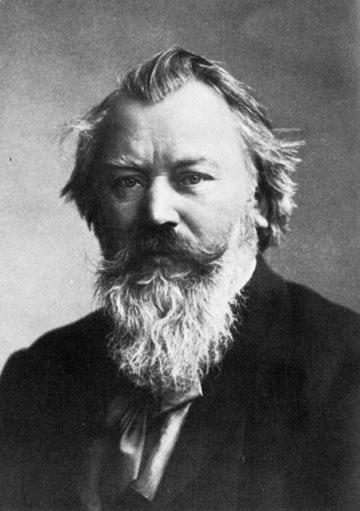
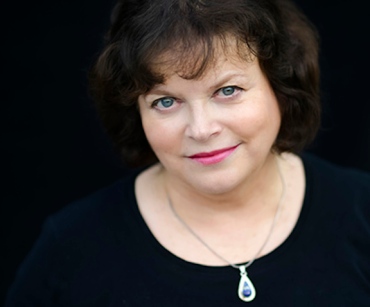
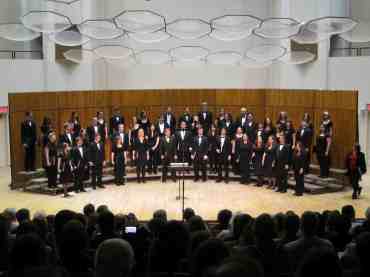
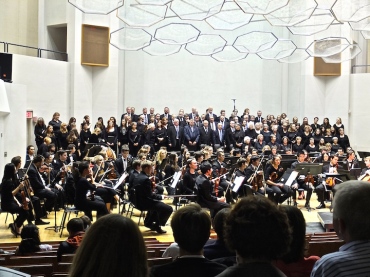
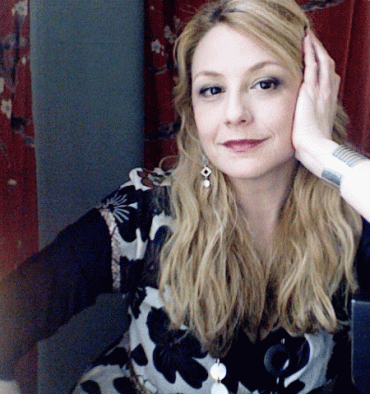
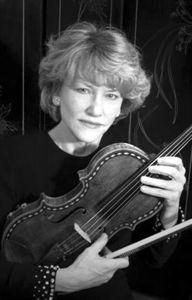
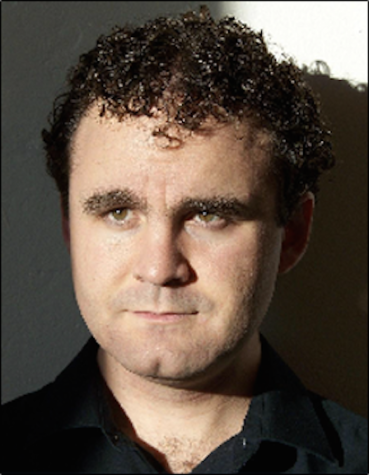
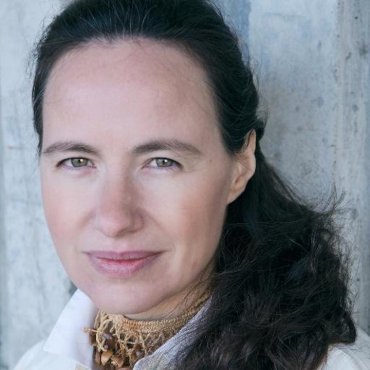
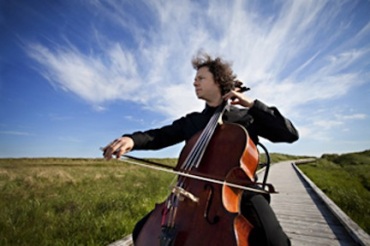
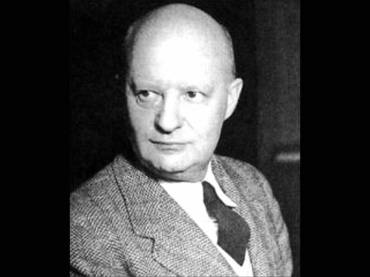
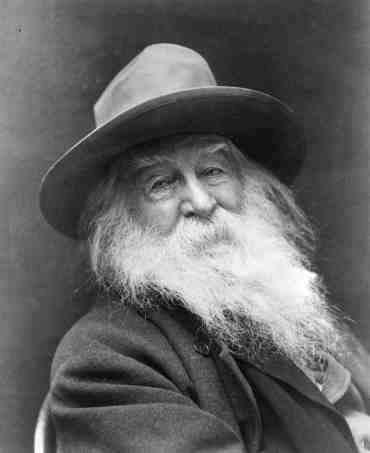
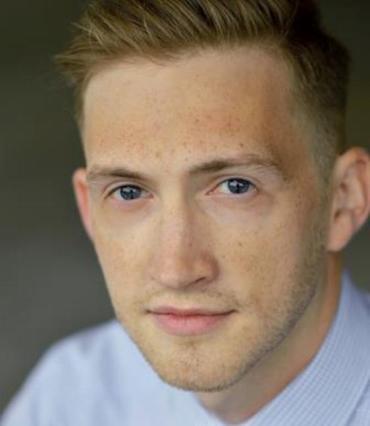
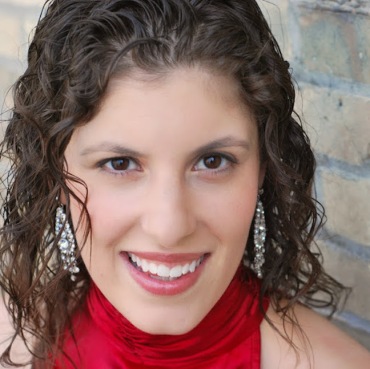
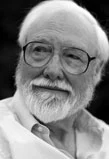




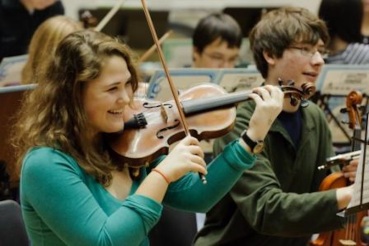




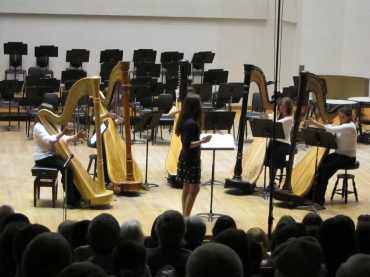
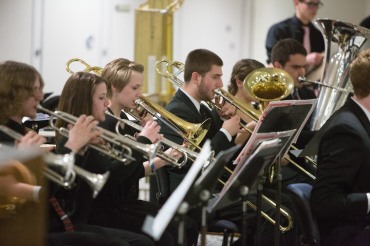

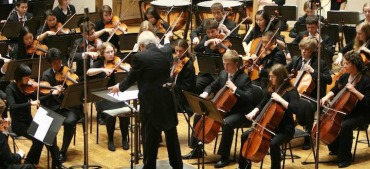






Did Beethoven and his Fifth Symphony foster racism, exclusion and elitism in the concert hall? The Ear thinks that is PC nonsense. What do you think?
8 Comments
PLEASE HELP THE EAR. IF YOU LIKE A CERTAIN BLOG POST, SPREAD THE WORD. FORWARD A LINK TO IT OR, SHARE IT or TAG IT (not just “Like” it) ON FACEBOOK. Performers can use the extra exposure to draw potential audience members to an event. And you might even attract new readers and subscribers to the blog.
By Jacob Stockinger
Controversy has struck big among classical music critics and fans — just in time for the Beethoven Year that will celebrate the 250th anniversary of the composer’s birth this December. Plans call for celebrations by the Madison Symphony Orchestra, the Wisconsin Chamber Orchestra, the UW-Madison’s Mead Witter School of Music, and others.
At question is what seems yet another fallout and dust-up from the Black Lives Matter movement and the current struggle to foster social justice and racial equality.
In some ways, it all seems inevitable.
Now the history-denying advocates of cancel culture are suggesting that Beethoven (below) and his music – especially the popular Fifth Symphony (you can hear the famous opening in the YouTube schematic video at the bottom) – fostered white privilege and the rise of racism, sexism and homophobia in the concert hall.
That seems like quite an accusation for a single composer and a single piece of music that was premiered in 1808.
The assertion is food for thought. But not much.
In the end The Ear finds it a stretch and a totally bogus argument. He thinks that Beethoven attracted far more performers and audiences than he repelled. Others, including famed critic Norman Lebrecht in his blog Slipped Disc and a critic for the right-wing newspaper The New York Post, agree:
https://slippedisc.com/2020/09/beethovens-5th-is-a-symbol-of-exclusion-and-elitism/
https://nypost.com/2020/09/17/canceling-beethoven-is-the-latest-woke-madness-for-the-classical-music-world/
The Ear also thinks it is political correctness run amok, even for someone who, like himself, advocates strongly for diversity of composers, performers and audiences – but always with quality in mind — in the concert hall.
Just because Beethoven was such a great creative artist is hardly cause to blame him for the inability of other artists to succeed and for non-white audiences taking to classical music. Other forces — social, economic and political — explain that much better.
Yes, Beethoven is a towering and intimidating figure. And yes, his works often dominate programming. But both musicians and audiences return to him again and again because of the originality, power and first-rate quality of his many works.
Beethoven himself was deaf. That would certainly seem to qualify him as inclusive and a member of an important category of diversity.
No matter. The writers are happy to blame Ludwig and his work for exclusion and elitism. They argue that people of color, women and LGBTQ people have all felt alienated from classical music because of Beethoven’s legacy.
Of course, there is elitism in the arts. People may be equal, but creative talent is not.
And clearly, Beethoven was a towering and intimidating figure – more for the quality of his music than for the simple fact that it exists. Such exclusion and elitism have to do with other factors than the composition of the Fifth Symphony.
If The Ear recalls correctly, when he died Beethoven was given the largest state funeral up to that time for a non-royal, non-politician or non-military person.
And how do you explain that Beethoven’s music, so representative of Western culture, appeals deeply to and attracts so many Asians and Asian-Americans, and became both banned and symbolically central to those opposed to Chairman Mao’s Cultural Revolution in China?
But these days being provocative can become its own reward.
You can read the analysis and decide about its merits for yourself, then let us know what you think in the Comment section.
Here is a link to the opinion piece in Vox Magazine, a free online journal: https://www.vox.com/switched-on-pop/21437085/beethoven-5th-symphony-elitist-classism-switched-on-pop
What do you think about the idea that Beethoven played a large and seminal role in fostering an elitist and exclusive culture in classical music?
Did you ever feel alienated from classical music because of Beethoven or know others who have?
What is your favorite Beethoven composition?
The Ear wants to hear.
Share this:
Tags: #AsianHistory, #BeethovenYear, #BlackLivesMatter, #BlogPost, #BlogPosting, #CancelCulture, #ChairmanMao, #ChamberMusic, #ChoralMusic, #ClassicalMusician, #ConcertHall, #CreativeArtist, #CulturalRevolution, #DigitalMedia, #DisabilityRights, #FacebookPost, #FacebookPosting, #FifthSymphony, #FoodforThought, #GenderEquality, #JacobStockinger, #LGBTQrights, #LudwigVanBeethoven, #MadisonSymphonyOrchestra, #MaoTse-Tung, #MaoZeding, #MeadWitter, #MusicCritic, #NormanLebrecht, #OperaMusic, #OrchestralMusic, #People'sRepublicofChina, #PianoSonata, #PieceofMusic, #PoliticalCorrectness, #ProArteQuartet, #RacialEquality, #RightWing, #SlippedDisc, #SocialJustice, #StateFuneral, #StringQuartet, #SymphonicMusic, #TheEar, #TheNewYorkPost, #TheOther, #TheUW, #UniversityofWisconsin-Madison, #VocalMusic, #VoxMagazine, #WesternCulture, #WhitePrivilege, #WisconsinChamberOrchestra, #YouTubevideo, accusation, advocates, agree, alienate, alienated, amok, analysis, anniversary, appeal, applause, argument, artist, Arts, Asia, asian, Asian American, attract, audience, banned, Beethoven, Beethoven Year, being, big, birth, Black Lives Matter, blame, BLM, blog, bogus, cancel culture, category, cause, celebrations, Chairman Mao, Chamber music, China, choral music, civilian, Classical music, classicalmusic, clothing, comment, commentary, composer, Composition, Concert, concert hall, concerto, conservative, controversry, creative, Cultural Revolution, culture, days, deaf, death, December, decide, digital, disability, diverse, diversity, dominate, dust-up, economic, economics, elite, elitism, elitist, equality, exclusion, Facebook, fallout, famous, fans, favorite, Fifth Symphony, figure, first-rate, food, forces, foster, funeral, gender, gender equality, great, hear, homophobia, idea, inability, inclusive, intimidating, Jacob Stockinger, large, legacy, LGBT, LGBTQ, LGTB, like, line, link, Ludwig van Beethoven, Madison Symphony Orchestra, Mao, Mao Tse-Tung, Mao-Zedong, Mead Witter School of Music, merits, military, mind, movement, Music, music critic, Musician, Newspaper, noise, non-military, non-royal, non-white, nonsense, Norman Lebrecht, online, Op-Ed, opening, opera, opinion, Orchestra, orchestral music, original, originality, other, PC, People, performer, Piano, piece of music, plans, political, political correctness, Politics, popular, post, posting, power, premiere, Pro Arte Quartet, programming, provocative, quality, question another, race, racial equality, racism, racist, read, reader, recall, repel, return, reward, right-wing, rise, role, royal, schematic, seminal, Sexism, sexist, share, silence, single, Slipped Disc, social, social justice, Sonata, state funeral, story, stretch, String quartet, strong, subscriber, succeed, symbol, symbolically, symphony, tag, talent, The Ear, The New York Post, the other, think, thought, towering, United States, University of Wisconsin-Madison School of Music, University of Wisconsin–Madison, UW, UW-Madison, Viola, Violin, vocal music, Vox Magazine, want, Western culture, white privilege, Wisconsin, Wisconsin Chamber Orchestra, woke, work, year, you, yourself, YouTube